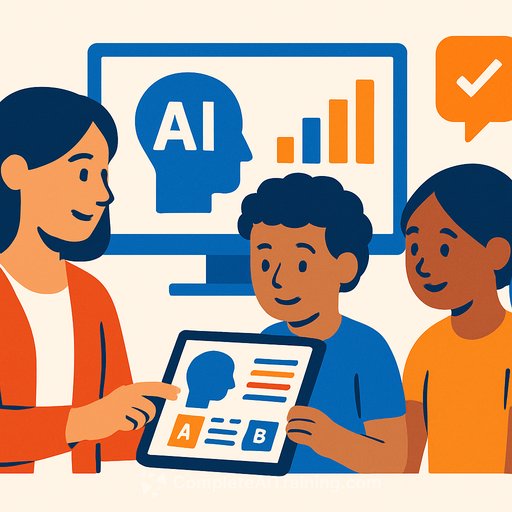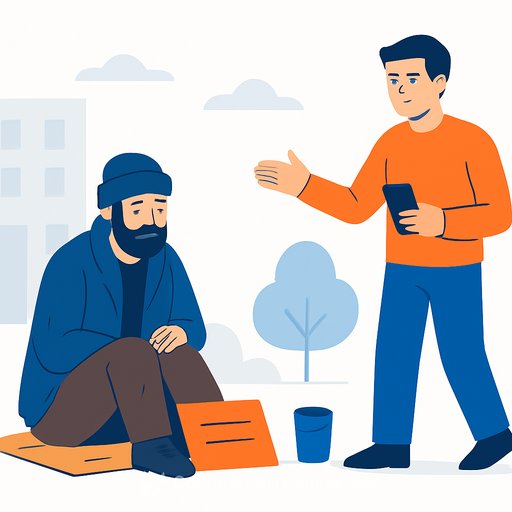How Adaptive AI Tools Are Personalising Education for Children
Personalisation is finally practical. With large language models and adaptive systems, content can shift in real time to fit how each child learns. The tech extends a teacher's reach, it doesn't replace it. The result: more dialogue, less passive consumption, and better support for every learner.
From Static Content to Conversational Tutoring
Traditional materials are fixed. Adaptive tutors turn lessons into a two-way conversation where students ask, probe, and iterate until concepts click. This lowers fear of failure and keeps attention where it matters-on thinking, not memorising.
These systems don't stop at Q&A. They adjust format and pacing. A visual learner gets an interactive diagram. A kinesthetic learner gets a hands-on task. A verbal learner gets analogies and step-by-step reasoning.
As foundational instruction becomes more responsive, teachers can focus on facilitation, higher-order projects, and the social-emotional skills that require human presence. The classroom becomes a blend of human mentorship and adaptive support.
Stories, Visuals, and Micro-Lessons That Stick
Stories make ideas memorable. Generative tools can turn fractions into a kitchen challenge, history into a child's-eye narrative, or ecology into a forest tale. Abstract ideas become concrete, relatable, and easier to recall.
Short-form, visually rich formats meet students where they already spend time. Snackable videos, interactive visuals, and gamified micro-lessons don't dilute rigor-they lower the barrier to entry and keep momentum high.
Context, Motivation, and Formative Feedback
Context builds connection. The same math concept can use a cricket example for one student and a local festival for another. Localisation makes learning feel personal, which is especially useful in diverse classrooms.
Instead of blunt right/wrong labels, adaptive systems offer hints, scaffolds, and encouragement. That fosters resilience, curiosity, and a growth mindset-traits that compound over time more than a single mark ever could.
AI as a Partner for Educators
For teachers, AI can take the grind out of routine tasks. Attendance, basic grading for objective items, feedback drafts, and record-keeping can be streamlined, giving back hours for planning and student relationships.
Real-time insights highlight who is stuck, where misconceptions cluster, and which interventions help. That makes small-group instruction more precise and whole-class strategy more proactive.
Implementation Playbook for Schools
- Define outcomes first. What should students know, do, and feel? Select tools that serve those goals, not the other way around.
- Prioritise multimodal support. Ensure the tool can switch among visuals, simulations, step-by-step reasoning, and hands-on prompts.
- Start small. Pilot with one unit or one grade level. Compare engagement, retention, and error patterns to your baseline.
- Blend with teacher-led learning. Set "AI minutes" for practice and feedback, then use class time for discussion, creation, and collaboration.
- Use formative loops. Daily quick checks, instant hints, and mastery thresholds keep progress visible and actionable.
- Localise examples. Build a bank of culturally relevant prompts and analogies by region, language, and interest.
- Set guardrails. Clarify data privacy, transparency with families, and when students should or should not use AI support. See guidance from UNESCO and the U.S. Department of Education.
- Upskill your staff. Short, practical PD on prompt patterns, feedback quality, and classroom workflows beats one-off demos. For curated learning paths by role, explore Complete AI Training: Courses by Job.
- Measure what matters. Track concept mastery, time-on-task, and student confidence-not just test scores.
What to Watch For
Accuracy and bias. AI can be wrong or culturally narrow. Keep human oversight in the loop, require citation or reasoning, and encourage students to verify.
Over-reliance. Students should build judgment, not just speed. Balance AI support with independent practice and peer explanation.
Access and equity. Plan for devices, connectivity, multilingual support, and accommodations so every student benefits.
The Classroom Ahead
Personalised tutoring, contextual examples, and instant feedback are now within reach for every student. Teachers remain the anchor-setting direction, building community, and developing character. With the right workflows, adaptive AI becomes a quiet force in the background, helping each child learn in the way that works best for them.
Your membership also unlocks:






